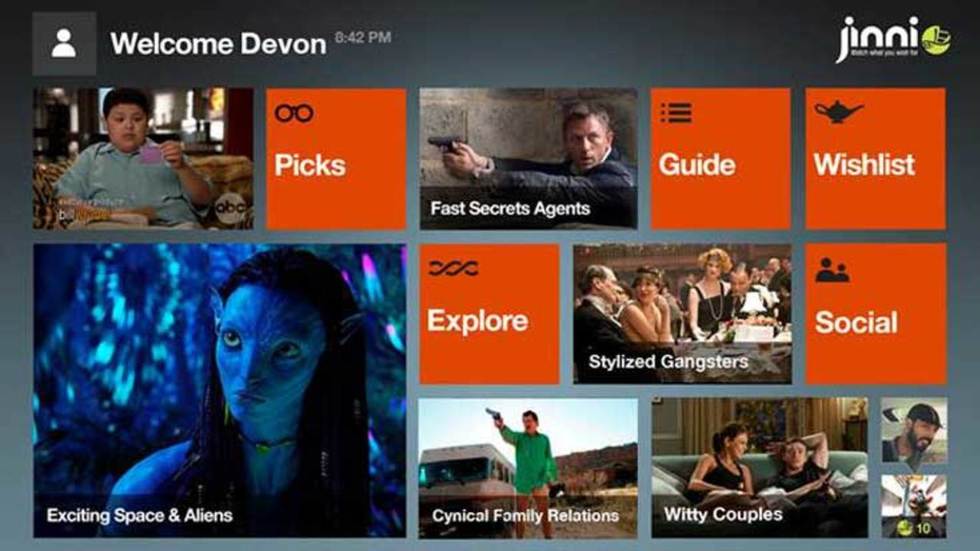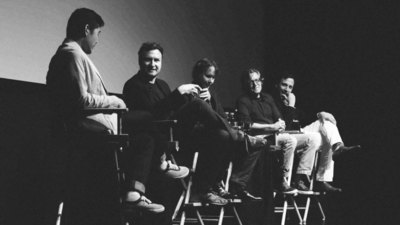
BY YOSI GLICK |
10 Golden Rules for the Next Generation TV Guide
The co-founder & CEO of Jinni explores couch potatoes, content, VOD, and the myriad new ways we figure out what we want to watch.

Editor's Note: Today’s TV guides make it difficult to find the movie you want, especially if it is an independent movie. There is much exciting work being done to improve that situation. Yosi Glick lays down the rules of the road for those working to make the TV interface of the future.
After sixty years in hibernation, the TV guide is finally awakening to innovation. The static grid of shows and airing times that granny loved getting in the mail each week is crumbling under the strain of hundreds of linear channels, DVR, VOD and over-the-top internet streaming services and a new generation of consumers who expect a fast, personalized discovery experience.
Providers can feel the winds of change brewing and are investing top talent to develop the next generation of guides. The following are 10 challenges and opportunities the industry must master if it wants to continue to keep customers happy.
1) The Couch Potato is Here to Stay
This is not an insult, simply a fact. When we sit down in front of the TV we want to watch something good and we expect it to be easy to find. After all, we’re not in the mood to work. Users want the act of finding something to watch to be as effortless and enjoyable as watching it is.
2) The Paradox of Choice Requires Personalization
Too much choice is overwhelming and is a barrier to consumption. The guide must give quality, personalized recommendations to help users overcome the fear of regret and so the guide becomes your best salesperson.
3) Content Selection is Meaning Driven
What do you want to know about a movie before you decide to watch it? Basic metadata isn’t much help. A rich, human description of the mood, style and plot elements gives us a real feeling for the movie and allows us to overcome the fear of regret and decide if we want to see it.
4) Future-proof the Guide for an On-demand World
On-demand video is growing fast and now is the time to future-proof the guide. Service providers that don’t move quickly are at risk of choking future consumption with an antiquated guide.
5) Building Trust Between Man and Machine
Trust is what fuels recommendations to spur action. How can humans learn to trust machine-made recommendations? A discovery engine must be able to explain, in human terms, everything it does.
6) There is No Such Thing as ‘Average Taste’
Our tastes are as distinct and varied as we are. Sometimes I enjoy a witty humorous movie about couple relations, other times I’m in the mood for stylized, exciting movies about space travel and saving the world with androids and alien. You can’t average out things like ‘aliens’ and ‘couple relations’ to get a mathematical estimation of my taste. Yet this is exactly what most so-called ‘personalized discovery’ engines do; bunch everything a user likes together.
If we are going to deliver a truly personalized experience that will help consumers find content they will enjoy, first we must recognize that each individual is unique and his or her tastes include several distinct types of content.
7) Keeping Content Fresh is a Challenge
Movies and TV shows are special, that’s why we love them so much. But that’s also why finding and choosing the right content is such a difficult process. We expect endless fresh programming, to fit our specific preferences and to match the exact mood we’re in at that moment.
If the guide fails to lead users quickly to find content that suits their taste and mood, they will blame the provider and come to the conclusion that there is ‘nothing good to watch’.
8) Humans Seek Meaning, Not Data
We have all been trained by web browsers to think in keywords, but human communication is more than a collection of key words wound into a Boolean string. Just try asking Google to recommend a ‘feel-good witty movie about couple relations’ – you won’t get useful results. The next generation of guides needs to speak in casual human language and deliver relevant and accurate results.
9) ‘Lingua Franca’ of Video Content
The only way guides will be able to communicate with users in a meaningful language is by adopting a normalized unified language or ‘Lingua Franca’ for describing entertainment content. This Lingua Franca will allow the breadth of entertainment content to be described in a single descriptive language irrespective of the producer, director or screenwriter. From the consumer perspective, all content can be understood in the same natural metaphor.
10) Separating the Social Wheat from the Chaff
Our entire industry seems caught up in the latest Social TV buzz. All the tweets, updates, ‘likes’ and ‘+’s have created massive amounts of TV and movie related social media data. But this kind of random chatter doesn’t drive consumption and it doesn’t enhance the television experience. Why?
The truth is that most of your friends don’t share your taste in television shows and movies. If Social TV is going to truly enhance the discovery experience, we must be able to identify those few friends that have similar tastes and use them as a source of high quality social recommendations. THAT is social TV.


